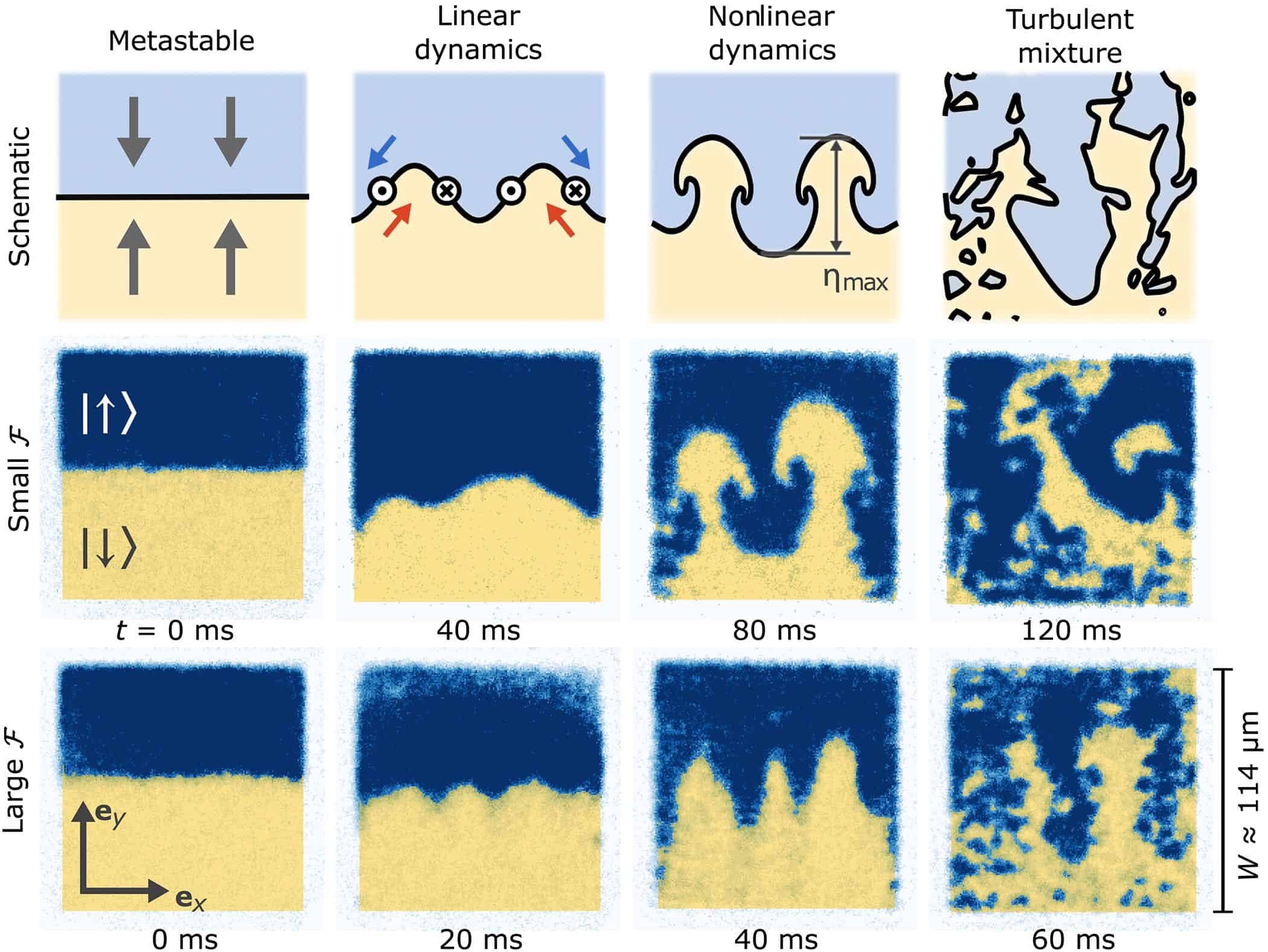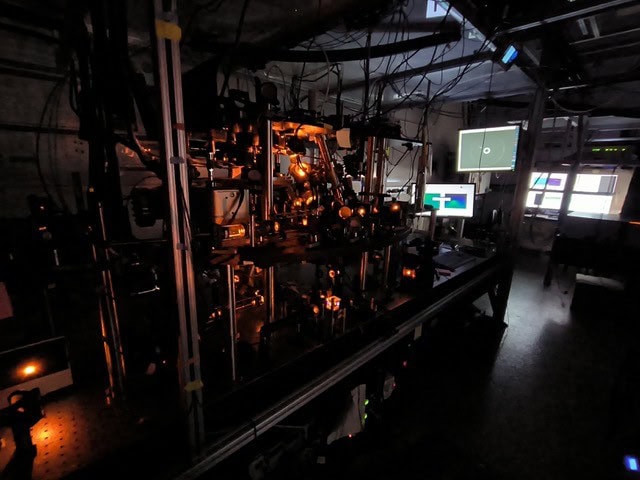A New Startup Wants to Edit Human Embryos



In this episode of Space Minds, host David Ariosto speaks with Doug Hendrix, co-founder and CEO of ExoAnalytic Solutions — a company born from three physicists’ passion for solving the hardest problems in space.
The post Inside the new age of space domain awareness appeared first on SpaceNews.

China’s persistent use of maritime gray zone tactics poses a fundamental challenge to regional stability and the international order. These actions are designed to achieve strategic aims — territorial advancement and sovereignty erosion — without crossing the threshold of conventional armed conflict. Using ambiguity and indirect coercion, China seeks to “advance without attacking” and shape […]
The post Confronting China’s pervasive maritime gray zone campaign appeared first on SpaceNews.

MOUNTAIN VIEW, California — Momentus announced a partnership Oct. 30 with DPhi Space to fly Swiss startup’s hosted-payload platform early next year. Momentus will host the DPhi Space Clustergate-2 payload, which is designed to turn a host spacecraft into a “high-performance hub” on the Vigoride 7 spacecraft, according to the news release. By working with […]
The post Momentus Vigoride-7 to fly DPhi Space hosted payload platform appeared first on SpaceNews.
.jpg)
Female university students do much better in introductory physics exams if they have the option of retaking the tests. That’s according to a new analysis of almost two decades of US exam results for more than 26 000 students. The study’s authors say it shows that female students benefit from lower-stakes assessments – and that the persistent “gender grade gap” in physics exam results does not reflect a gender difference in physics knowledge or ability.
The study has been carried out by David Webb from the University of California, Davis, and Cassandra Paul from San Jose State University. It builds on previous work they did in 2023, which showed that the gender gap disappears in introductory physics classes that offer the chance for all students to retake the exams. That study did not, however, explore why the offer of a retake has such an impact.
In the new study, the duo analysed exam results from 1997 to 2015 for a series of introductory physics classes at a public university in the US. The dataset included 26 783 students, mostly in biosciences, of whom about 60% were female. Some of the classes let students retake exams while others did not, thereby letting the researchers explore why retakes close the gender gap.
When Webb and Paul examined the data for classes that offered retakes, they found that in first-attempt exams female students slightly outperformed their male counterparts. But male students performed better than female students in retakes.
This, the researchers argue, discounts the notion that retakes close the gender gap by allowing female students to improve their grades. Instead, they suggest that the benefit of retakes is that they lower the stakes of the first exam.
The team then compared the classes that offered retakes with those that did not, which they called high-stakes courses. They found that the gender gap in exam results was much larger in the high-stakes classes than the lower-stakes classes that allowed retakes.
“This suggests that high-stakes exams give a benefit to men, on average, [and] lowering the stakes of each exam can remove that bias ” Webb told Physics World. He thinks that as well as allowing students to retake exams, physics might benefit from not having comprehensive high-stakes final exams but instead “use final exam time to let students retake earlier exams”.
The post Lowering exam stakes could cut the gender grade gap in physics, finds study appeared first on Physics World.
Earlier this year I met the Massachusetts-based steampunk artist Bruce Rosenbaum at the Global Physics Summit of the American Physical Society. He was exhibiting a beautiful sculpture of a “quantum engine” that was created in collaboration with physicists including NIST’s Nicole Yunger Halpern – who pioneered the scientific field of quantum steampunk.
I was so taken by the art and science of quantum steampunk that I promised Rosenbaum that I would chat with him and Yunger Halpern on the podcast – and here is that conversation. We begin by exploring the art of steampunk and how it is influenced by the technology of the 19th century. Then, we look at the physics of quantum steampunk, a field that weds modern concepts of quantum information with thermodynamics – which itself is a scientific triumph of the 19th century.
This podcast is supported by Atlas Technologies, specialists in custom aluminium and titanium vacuum chambers as well as bonded bimetal flanges and fittings used everywhere from physics labs to semiconductor fabs.
The post Quantum steampunk: we explore the art and science appeared first on Physics World.

China aims to conduct the first launch of its Long March 10 rocket and a lunar-capable crew spacecraft next year, according to a top official.
The post China targets 2026 for first Long March 10 launch, new lunar crew spacecraft flight appeared first on SpaceNews.

Two former NASA administrators criticized the agency’s current use of SpaceX’s Starship for the Artemis 3 crewed lunar landing, calling for an urgent redirection to reach the moon before China.
The post Former NASA administrators call for changes in Artemis lunar lander architecture appeared first on SpaceNews.

Bohemia, New York (October 2025) – Power Device Corporation (PDC) a trusted leader in space electronics for over 25 years, proudly announces the launch of its latest innovation: the Osiris […]
The post PDC Unveils Osiris Computer Module Featuring Microchip’s PIC64-HPSC for Next-Gen Space Missions appeared first on SpaceNews.


Researchers in the US have replicated a well-known fluid-dynamics process called the Rayleigh-Taylor instability on a quantum scale for the first time. The work opens the hydrodynamics of quantum gases to further exploration and could even create a new platform for understanding gravitational dynamics in the early universe.
If you’ve ever tried mixing oil with water, you’ll understand how the Rayleigh-Taylor instability (RTI) can develop. Due to their different molecular structures and the nature of the forces between their molecules, the two fluids do not mix well. After some time, they separate, forming a clear interface between oil and water.
Scientists have studied the dynamics of this interface upon perturbations – disturbances of the system – for nearly 150 years, with major work being done by the British physicists Lord Rayleigh in 1883 and Geoffrey Taylor in 1950. Under specific conditions related to the buoyant force of the fluid and the perturbative force causing the disturbance, they showed that this interface becomes unstable. Rather than simply oscillating, the system deviates from its initial state, leading to the formation of interesting geometric patterns such as mushroom clouds and filaments of gas in the Crab Nebula.
To show that such dynamics occur not only in macroscopic structures, but also at a quantum scale, scientists at the University of Maryland and the Joint Quantum Institute (JQI) created a two-state quantum system using a Bose-Einstein condensate (BEC) of sodium (23Na) atoms. In this state of matter, the temperature is so low, the sodium atoms behave as a single coherent system, giving researchers precise control of their parameters.
The JQI team confine this BEC in a two-dimensional optical potential that essentially produces a 100 µm x 100 µm sheet of atoms in the horizontal plane. The scientists then apply a microwave pulse that excites half of the atoms from the spin-down to the spin-up state. By adding a small magnetic field gradient along one of the horizontal axes, they induce a force (the Stern-Gerlach force) that acts on the two spin components in opposite directions due to the differing signs of their magnetic moments. This creates a clear interface between the spin-up and the spin-down atoms.
To initiate the RTI, the scientists need to perturb this two-component BEC by reversing the magnetic field gradient, which consequently reverses the direction of the induced force. According to Ian Spielman, who led the work alongside co-principal investigator Gretchen Campbell, this wasn’t as easy as it sounds. “The most difficult part was preparing the initial state (horizontal interface) with high quality, and then reliably inverting the gradient rapidly and accurately,” Spielman says.
The researchers then investigated how the magnitude of this force difference, acting on the two sides of the interface, affected the dynamics of the two-component BEC. For a small differential force, they initially observed a sinusoidal modulation of the interface. After some time, the interface enters a nonlinear dynamics regime where the RTI manifests through the formation of mushroom clouds. Finally, it becomes a turbulent mixture. The larger the differential force, the more rapidly the system evolves.

While RTI dynamics like these were expected to occur in quantum fluids, Spielman points out that proving it required a BEC with the right internal interactions. The BEC of sodium atoms in their experimental setup is one such system.
In general, Spielman says that cold atoms are a great tool for studying RTI because the numerical techniques used to describe them do not suffer from the same flaws as the Navier-Stokes equation used to model classical fluid dynamics. However, he notes that the transition to turbulence is “a tough problem that resides at the boundary between two conceptually different ways of thinking”, pushing the capabilities of both analytical and numerical techniques.
The scientists were also able to excite waves known as ripplon modes that travel along the interface of the two-component BEC. These are equivalent to the classical capillary waves –“ripples” when a droplet impacts a water surface. Yanda Geng, a JQI PhD student working on this project, explains that every unstable RTI mode has a stable ripplon as a sibling. The difference is that ripplon modes only appear when a small sinusoidal modulation is added to the differential force. “Studying ripplon modes builds understanding of the underlying [RTI] mechanism,” Geng says.
The flow of the spins
In a further experiment, the team studied a phenomenon that occurs as the RTI progresses and the spin components of the BEC flow in opposite directions along part of their shared interface. This is known as an interfacial counterflow. By transferring half the atoms into the other spin state after initializing the RTI process, the scientists were able to generate a chain of quantum mechanical whirlpools – a vortex chain – along the interface in regions where interfacial counterflow occurred.
Spielman, Campbell and their team are now working to create a cleaner interface in their two-component BEC, which would allow a wider range of experiments. “We are considering the thermal properties of this interface as a 1D quantum ‘string’,” says Spielman, adding that the height of such an interface is, in effect, an ultra-sensitive thermometer. Spielman also notes that interfacial waves in higher dimensions (such as a 2D surface) could be used for simulations of gravitational physics.
The research is described in Science Advances.
The post Quantum fluids mix like oil and water appeared first on Physics World.

MOUNTAIN VIEW, California – While organizations are focused on space applications for quantum communications, quantum computers are not likely to reach orbit for the foreseeable future. “Even if we see progress on the ground, it will take a long time before that could be a viable compute resource for space applications,” Simone D’Amico, EraDrive chief […]
The post Quantum’s promise for near and long-term space applications appeared first on SpaceNews.

The cost of encryption technologies has been a barrier. Many of the products now available to make satellite communications encrypted are expensive and out of reach for many commercial space firms.
The post Space sector’s cybersecurity dilemma: Pay now or pay later appeared first on SpaceNews.

MOUNTAIN VIEW, California – Investors are backing space companies with defense-related business lines. In many cases, growing Department of Defense interest in commercial space technologies is benefiting the most well-funded firms. “DoD is basically saying, ‘Hey, private sector, spend your equity dollars, do some preliminary work and that will help us decide what we want,’” […]
The post Investors gravitate toward space firms with defense applications appeared first on SpaceNews.

From inflationary pressures and shifting interest rates to supply chain challenges and intensifying great-power competition, today’s macroeconomic and geopolitical forces are reshaping the future of space investment. For investors and businesses, navigating this environment means balancing capital market dynamics, technology cycles, and an increasingly complex landscape of export controls, trade restrictions, and government influence.
The post Live Event: The Role of Space-Based Interceptors in Golden Dome appeared first on SpaceNews.

Saudi telecoms giant stc Group has signed a 10-year agreement that includes a $175 million prepayment commitment to use AST SpaceMobile’s planned space-based cellular broadband network, the Texas-based venture announced Oct. 29.
The post Saudi Arabia’s stc Group commits $175 million prepayment in AST SpaceMobile deal appeared first on SpaceNews.

